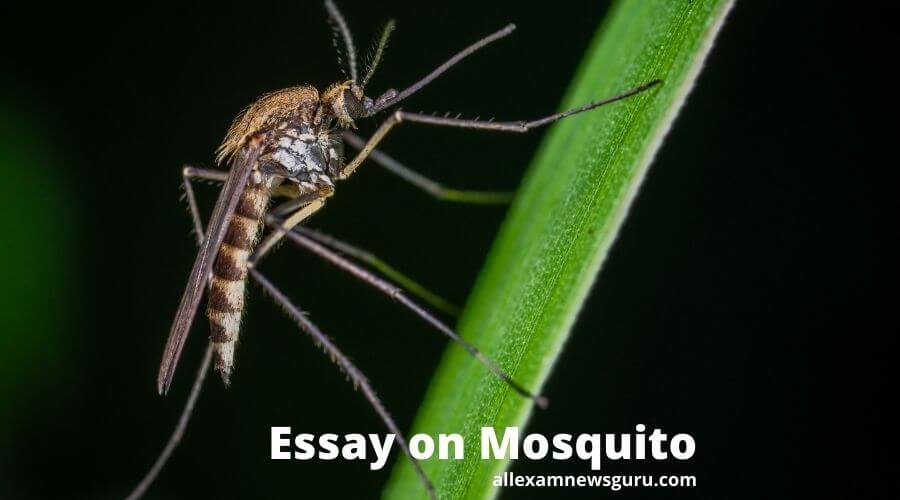If you are looking for an essay on mosquitoes, then you are at the right place.
Mosquitos are a common insect and are very dangerous as they spread several diseases like malaria and dengue.
Let’s dive right into the essay!
10 lines on Mosquito
- The Mosquito is a very common insect.
- It is very small but disturbing.
- It is mainly found in dark, damp, and dirty places.
- The female Mosquito lays eggs in dirty drains and still water.
- We are always afraid of mosquitoes.
- Only female mosquitoes can bite. Male mosquitoes have blunt stings.
- They enter their strings into the skin and suck blood.
- Mosquitoes are very dangerous.
- They spread different diseases like malaria, filaria, and dengue.
- To prevent these diseases, we should use mosquito nets. We also should clear dirty drains and ponds.
Essay on Mosquito
Mosquitoes are small insects that have a significant impact on our lives. While they may appear harmless due to their size, these tiny creatures are capable of causing discomfort and transmitting diseases. In this essay, we will explore the world of mosquitoes and understand their characteristics, behaviour, and the importance of controlling their population.
Mosquitoes belong to the family Culicidae and are found in almost every part of the world. They are attracted to warm and humid environments, making them prevalent in tropical and subtropical regions. These insects have distinct features, including long legs, slender bodies, and a pair of wings that allow them to fly with agility.
One of the most notorious aspects of mosquitoes is their feeding behaviour. Only female mosquitoes feed on the blood of animals, including humans. They use their elongated mouthparts, known as proboscis, to pierce the skin and extract blood.
While this may seem like a nuisance, mosquitoes play a role in the ecosystem as pollinators and a food source for other animals.
However, mosquitoes are not just annoying; they also pose health risks. Various diseases such as malaria, dengue fever, Zika virus, and West Nile virus are known to be carried by them.
These diseases can have severe consequences, especially in regions with limited healthcare resources. Therefore, it becomes crucial to take preventive measures to protect ourselves from mosquito-borne illnesses.
Controlling the mosquito population is a collective responsibility. Individuals can take simple actions to reduce their presence. Emptying stagnant water sources, using mosquito nets, wearing protective clothing, and applying insect repellent are effective methods to minimize mosquito bites.
Additionally, communities and governments can implement measures like insecticide spraying, mosquito breeding site removal, and public awareness campaigns to combat mosquito-borne diseases.
It is important to note that not all mosquitoes are harmful, and they do have a role in the natural ecosystem. Mosquito larvae serve as a source of food for fish and other aquatic creatures.
Furthermore, researchers continue to study mosquitoes to better understand their biology and develop improved methods of controlling their population while minimizing environmental impact.
- Essay on Sharks For Students & Children - April 8, 2024
- Essay on Cats for Students (+PDF) - November 4, 2023
- Essay on Carpenter|10 Lines on Carpenter - November 4, 2023

